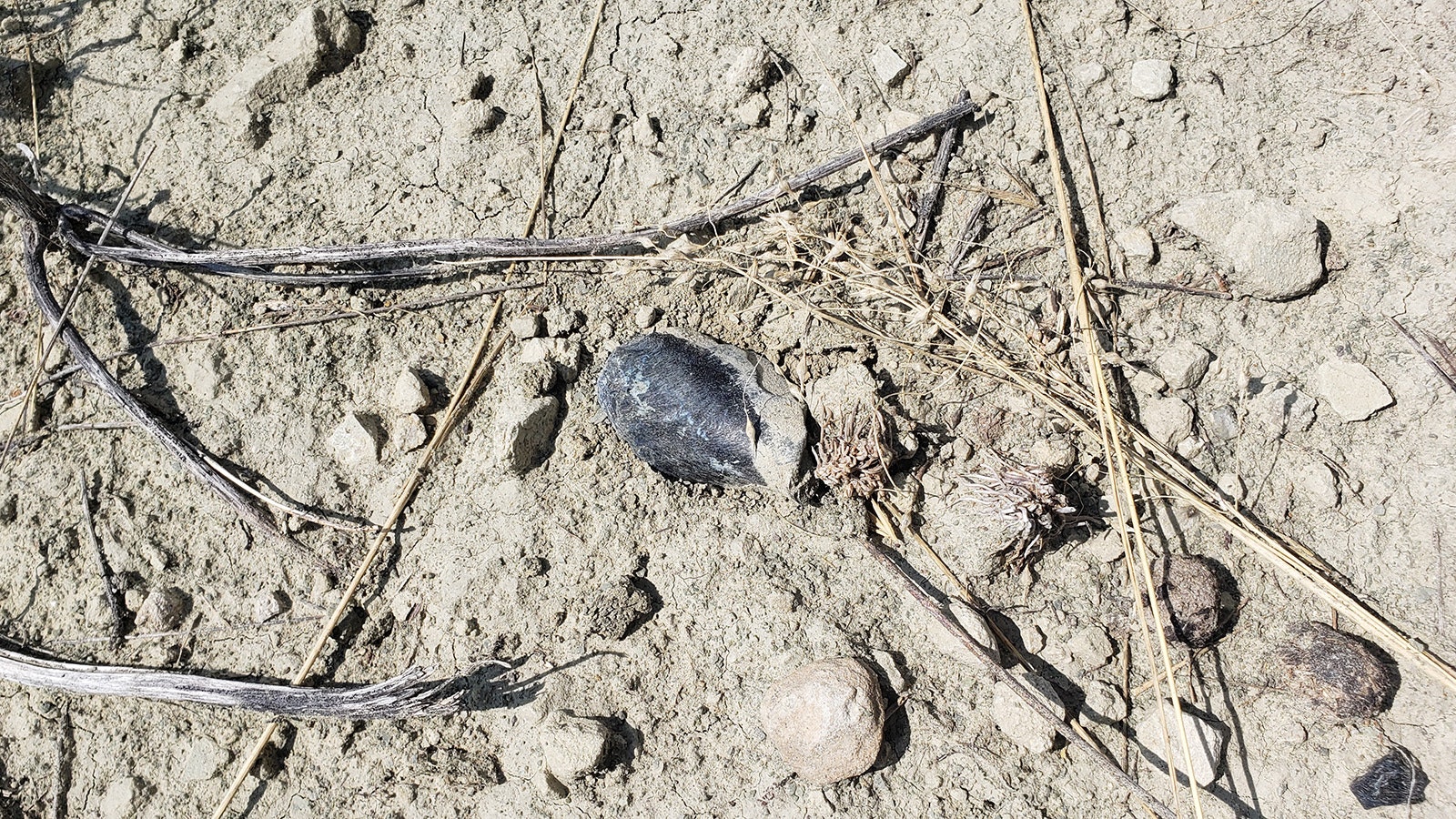It took millions of years, and a fair bit of luck.
One hundred and fifty million years, in fact, to turn a small area near Buffalo, Wyoming, from flat and uninteresting to uncommon and magical — at least from a paleontological point of view.
As time passed through millions of years, little baby hills began to push up against all the sedimentary layers of time. Those hills grew into what are today known as the Bighorn Mountains.
As those baby hills grew into mountains, they forced Jurassic bones from deep below the surface of the earth — iron streaked sandstone, known as the Morrison Formation, to come up and meet the sky.
That small, distinctive area is today surrounded by private farmlands, but has long been leased as a quarry for Sheridan College through a state permit.
The quarry is a small site in the grand sweep of mountainous schemes, at less than 640 acres. But it’s proven to have a deep bench over the years. More than 2,000 pounds of dinosaur bones have been quarried from the site in the last 30 or so years.
And that’s just scratching the surface.
Meet Caesar The Allosaurus
In the 90s, there was a particularly special find at Sheridan College’s quarry site near Buffalo. Two metatarsals — foot bones — peeking out from the sandstone were the only clue.
At first, the clearly visible fossils were just talking points on field trips where the late professor Mike Flynn taught students like Bill Matteson, who is now collections manager for Sheridan College’s Museum of Discovery.
But, eventually, Flynn’s son Brian convinced Professor Flynn to find out if there was anything more to those metatarsals.
Brian was 11 at the time. He was convinced, with all the certitude of youth, that there just had to be more bones waiting to be found with those metatarsals. It was only logical.
Brian turned out to be right. As the dig proceeded over the years, many more pieces of bone were found, including a complete skull and teeth.
The discovery made things very interesting for Sheridan College students at the time. They weren’t just reading about far-away scientists finding special and rare dinosaur specimens. They had their very own rare bones to uncover and work on, just like real paleontologists.
Eventually, over a period of several years, students involved in the project uncovered 40 percent of a creature called an allosaurus.
Who Really Ruled The Jurassic
While the movie, Jurassic Park, has everyone thinking Tyrannosaurus rex was king of the Jurassic, it’s just not so. The Jurassic happened 150 million years ago, but T. Rex didn’t exist until 70 or so million years ago, during the Cretaceous.
Instead it was the allosaurus who was the largest meat-eating dinosaur of the Jurassic. While not as large as T. Rex, allosauri were still very large carnivores, growing up to 35 feet in length, and weighing up to 3,000 pounds.
Matteson was among students helping uncover Caesar the Allosaurus at the time. He not only got to work on uncovering the creature’s teeth and skull, but later helped prepare it for exhibit.
“It was probably (not) until a little later in my career that I realized how fortunate that I was to be able to do something like that,” Matteson recalls. “It is not something that happens every day.”
In fact, some paleontologists may go an entire career without working on something as unique and special as Sheridan College’s allosaurus.
A Revival Is Underway
The site where Caesar was discovered is one of several Sheridan College quarry sites that have lain dormant for a number of years.
But things are about to get interesting there again, if Matteson and other college officials have their way.
“We’ve tried to resurrect all aspects of the museum and the geology program at the College,” Museum of Discovery Curator David Nicolarsen told Cowboy State Daily. “We’re starting to offer geology classes again, and we’ve got several this upcoming semester, and also a paleontology class for the community, a night class.”
Sheridan College has also been particularly active lately in setting up classes to inspire children to learn about science. Field trips to the quarry site are all part of the strategy.
The thing is, when it comes to getting kids and even adults interested in science, dinosaurs don’t hurt. Not in the slightest.
The most recent exploratory trip to the quarry site near Buffalo was all part of deciding where digging should begin anew at this very special place in Buffalo, Wyoming.
“We’ve got a really good collection for a small museum,” Nicolarsen said. “We’ve been, for the last 30 years, taking specimens out of that quarry. They’re Jurassic in time period from the Morrison formation, so they’re about 152 million years old.”
Nicolarsen and Matteson both believe there are many more specimens waiting to be found at the Sheridan College quarries. But it depends on having a large and active body of students and volunteers interested in helping do the work.
Renée Jean can be reached at renee@cowboystatedaily.com.

















